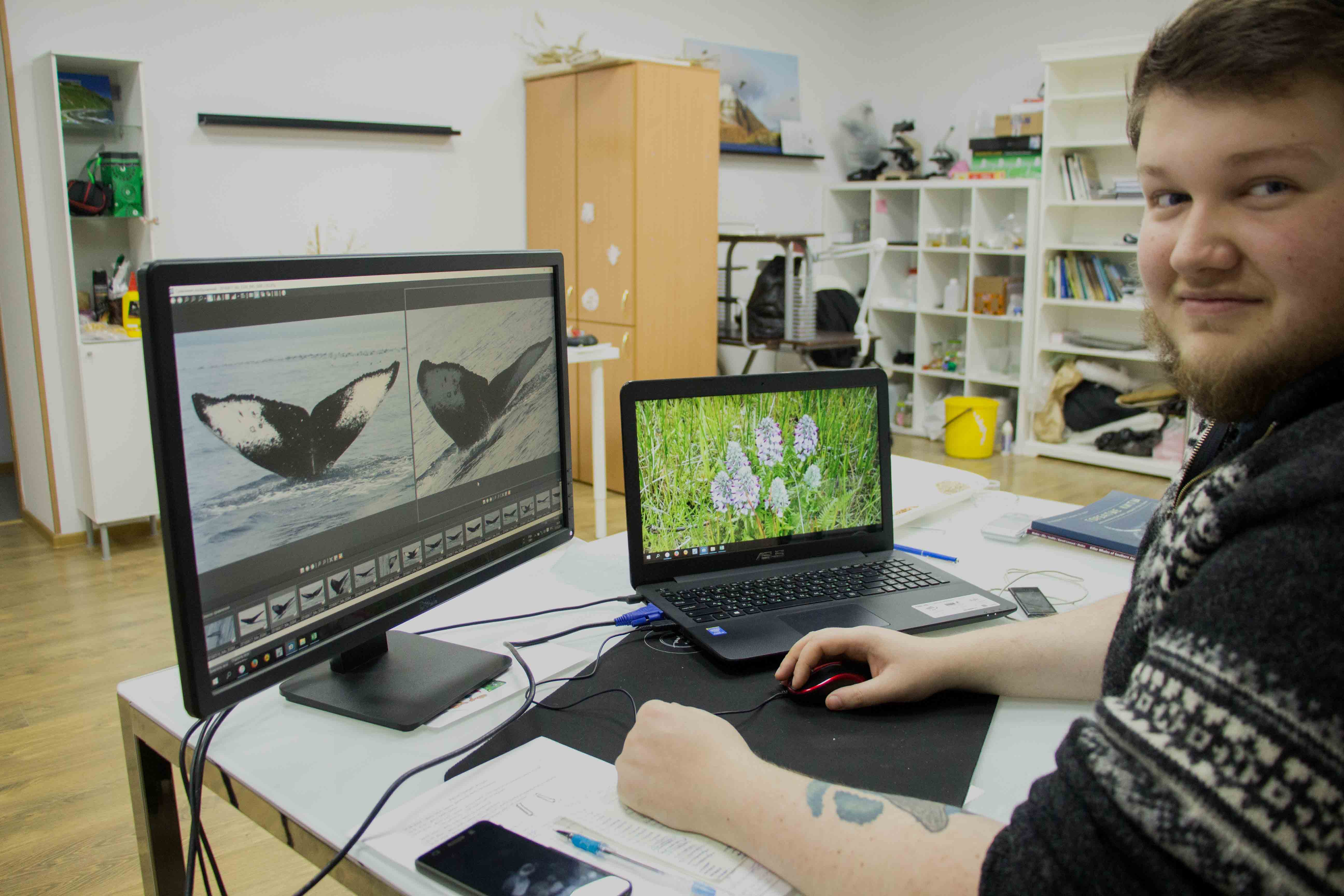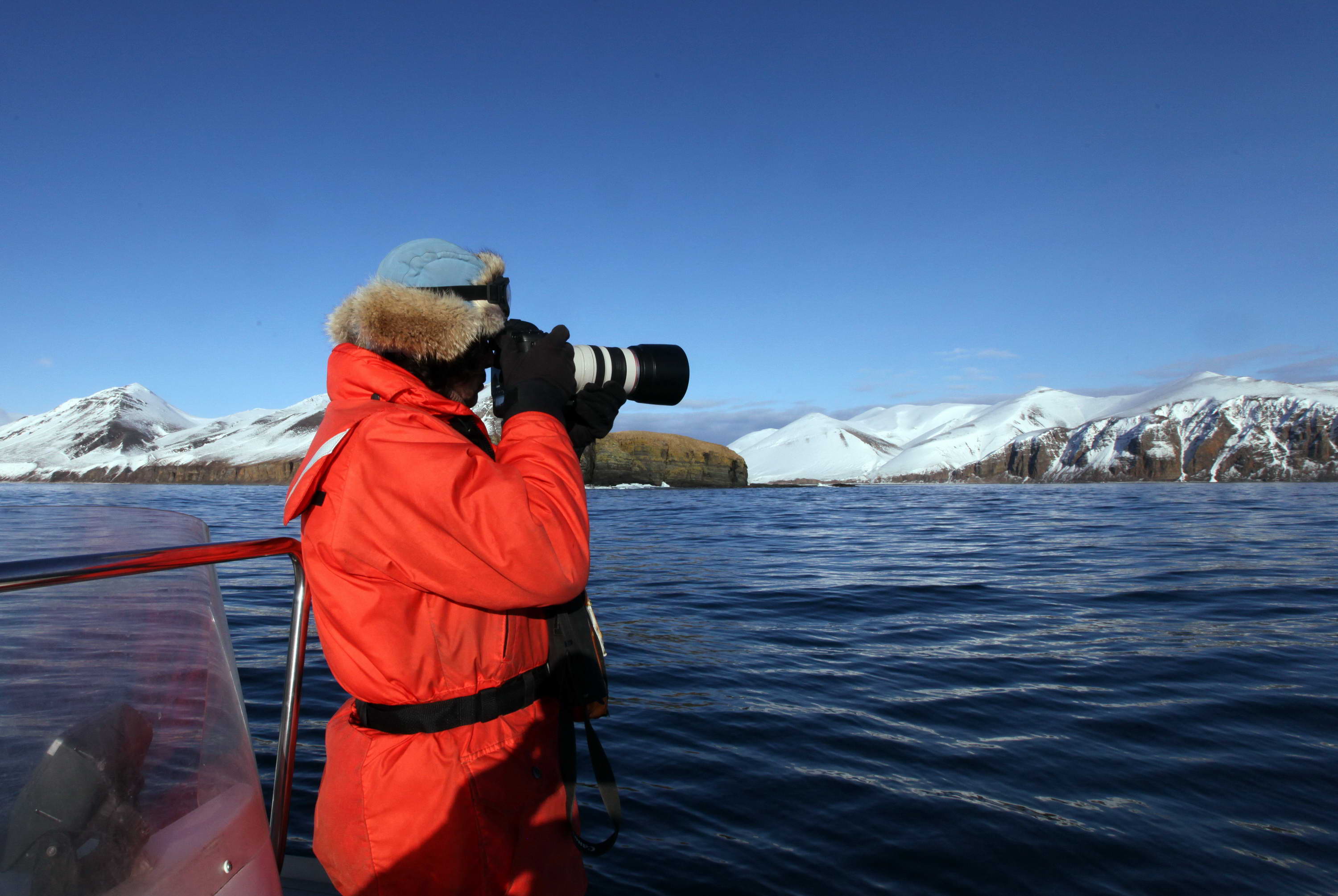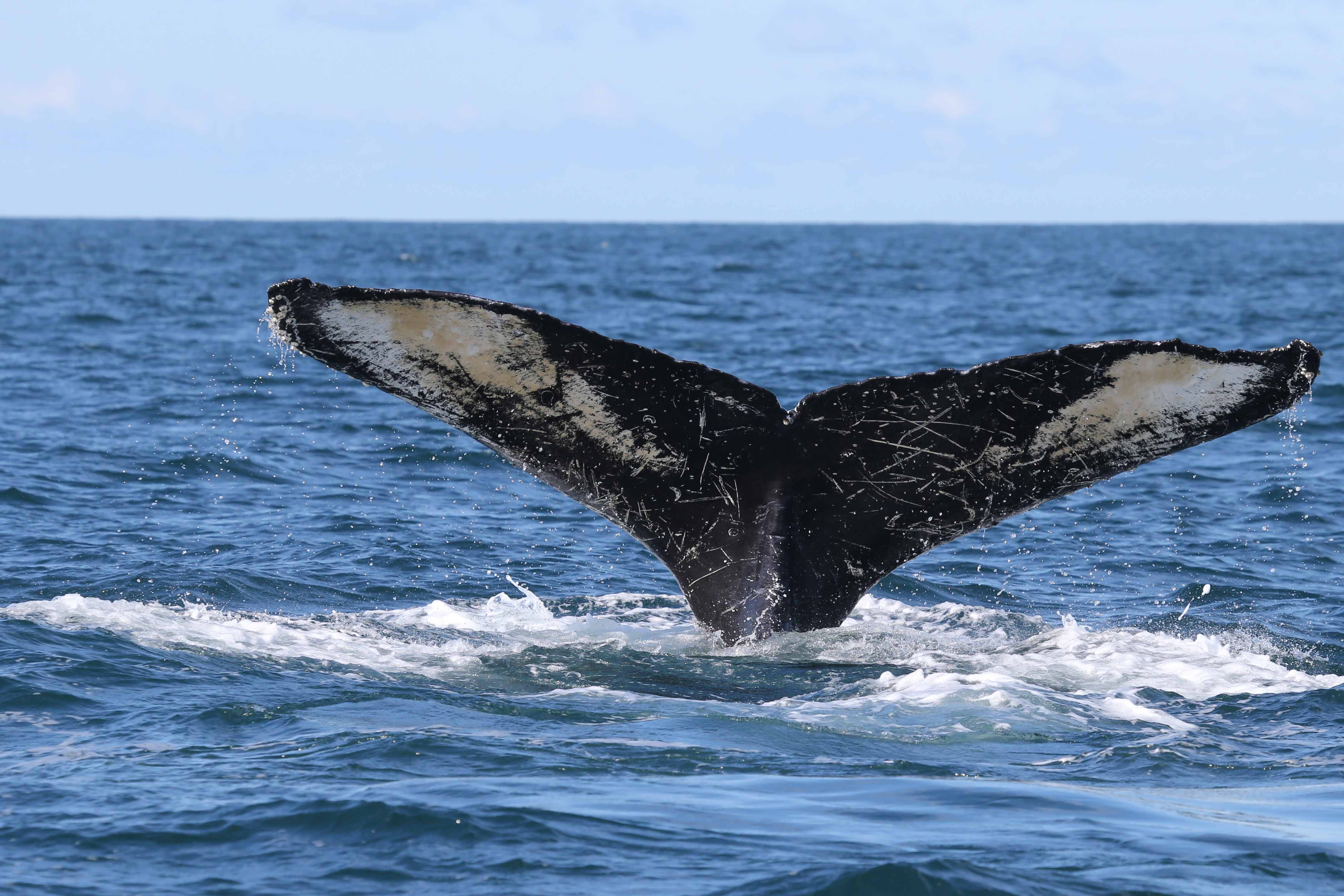Researchers of the Commander Islands Nature and Biosphere Reserve monitor cetaceans in the water area of the reserve all year round. They observe these giant mammals from land and from boat. Small vehicle navigation is open only from the end of spring to the end of autumn, so during this period we pay special attention to marine monitoring, because, to collect materials necessary for photo identification, we need to come close to the animals. Today we will tell you about this important procedure.
In 2016 the team of the Scientific Department of the Commander Islands Reserve managed to ship out 30 times and covered totally about 4 000 km. Every time the scientists saw different species such as Baird’s beaked whales, sperm whales, orca whales, Minke whales, humpback whales and other. Let’s concentrate on humpback whales. These marvelous creatures – one of the largest cetaceans in the water area of the islands – were seen during 18 trips. About 3 500 photos were taken. It is a huge amount of material for further analysis.

Researcher of the Commander Islands Nature and Biosphere Reserve Alexander Sidorov analyses photos of whales’ flukes, taken in 2016
Photo identification is possible if you have a picture of the downside of a fluke, which can be taken when a whale dives bending its back and showing its fluke. Every fluke has a unique combination of white spots and various markings, acquired through its long life. Every combination can serve as an ID, as fingerprints for people, which gives the scientists the possibility to know for sure which whale it is. Still the accuracy depends on skills of the researchers handling the photos. If we need to identify other cetaceans, we use photos of other parts, for example, dorsal fin, saddle markings or spots on them for orca whales. Back to the humpback whale.
Our analysis showed that in 2016 we met 207 humpback whales. 20 times we were lucky to see females with cubs, which were also taken picture of. This information is valuable to trace family links and estimate female fertility. Moreover, it is a chance to discover life stories of specific individuals. For example, we can estimate approximate rout of humpback whales comparing the photos we take near the Commander Islands and the photos, published in international catalogues, as whales do not know borders and are free to move in different countries water areas.
The Commander Islands Reserve has an archive with photos of humpback whales flukes taken in the past 11 years. Analysis of all the collected pictures can help us to measure the population of humpback whales near the islands and to understand better the destinies of some individuals: when they were first and last met in the water area of the Commander Islands, in which part of the water area they are more or less like to be found.

Evgeny Mamaev, PhD Biology and Deputy Director for Science in the Commander Islands Nature and Biosphere Reserve, takes photos of humpback whales for identification
Unfortunately, marine navigation around the Commander Islands isn’t active all year round, but only from the end of spring to the end of autumn. Moreover, even during this period not every day is suitable for marine monitoring because of weather conditions: strong rough wind, surge of the sea and fogs. The majority of time it is possible to observe the giant beasts only from coast, but this method also depends on weather, as everything else on the islands. Such monitoring is used throughout the year in different spots on Bering Island, one of which is situated near Nikolskoye village, right behind the Commander Islands Reserve visit-center. A necessary tool is a telescope with 25x to 100x magnifying power.
In the nearest future after processing all the photo materials the Commander Islands Nature and Biosphere Reserve is going to make our catalogue of humpback whales, and later of orca whales, sperm whales and other species.










